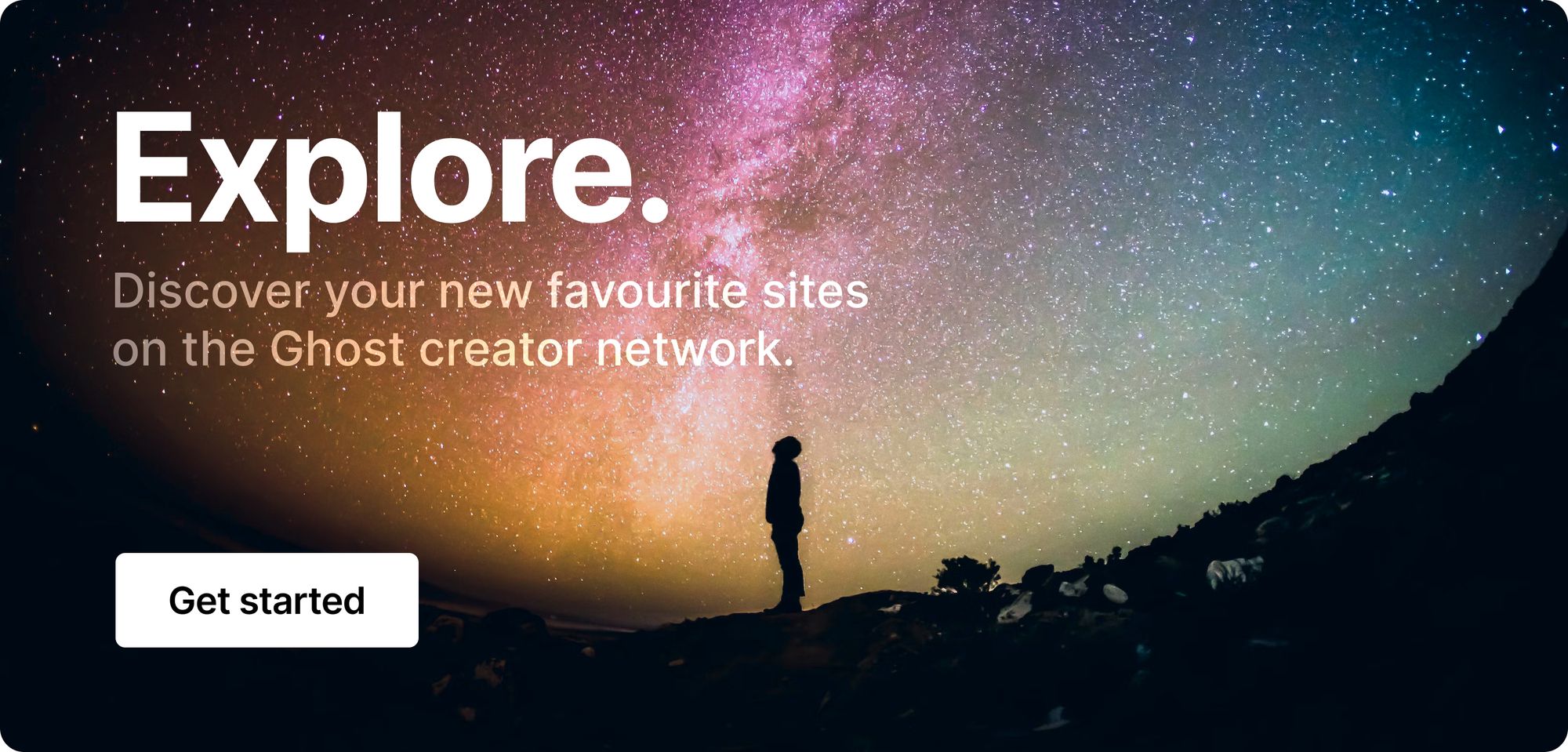⚔️ The double-edged sword of independence
As an independent creator, you get access to all of the freedom, control, and financial upside of your work. But you also gain all of the responsibility, pressure, and headaches that come along with trying to build something from scratch.
The trick is to remember this: even as an independent, you're not alone.
There are others on this journey too, most of whom are more than willing to share their insights to help others. This week, we've pulled a few of these treasures together just for you.
💬 In this issue:
- Solo. Tips for building an incredible operation with zero employees.
- Timing. How to create a sustainable productivity practice.
- Patient. See one creator's five-year journey to success.
👷♀️ How to build a one-person business model

Most of us overcomplicate our business. We're conditioned to think a thing needs complexity in order to be successful, wherein reality the opposite is usually true.
People like simple. If a reader doesn't understand what your newsletter is about, how likely are they going to be to subscribe or pay for it?
Dan Koe, a creator consultant, drove this idea home with their article on insights from one-person business models. Here are a few of the key takeaways Koe has gathered after seeing behind the curtain of top creators.
- Business is just an exchange of value. "You get something useful, I get something useful." Terms like content, monetization, audience building, and more can distract us from the most essential question: what value do I provide and how do I get paid for it?
- Clickbait is short-sighted. There are absolutely ways to get quick wins online, but most of them will cost you long-term success. One example Koe uses is a comparison of two headlines: “How I made 1 million dollars in 3 days” or “How I plan to make 1 million dollars in 5 years.” The first may get a blip of virality, but the second invites the reader into a journey — one they can learn from and, ideally, benefit from too.
- Pick one of the four "eternal markets." Koe writes that almost every business will fall into one of the following buckets: health, wealth, relationships, and happiness. Positioning your niche content so that it aligns with one of these could speed up your growth.
- Understand that content compounds. "People aren’t going to understand you from one tweet, video, or article alone." Publishing one article won't get you the success you're after. But publishing one a week for a year might. And publishing one a week for a decade will likely get you more success than you could imagine. It's like water dripping on rock — slow, consistent effort yields undeniable results.
🗞 Latest tips & stories
- How to support your members as an independent creator
- The secret to avoiding burnout
- How to write a blog post that people actually want to read
- Are you doing enough to recycle your evergreen content?
- How to do keyword research for free
🏭 How to build an effective content production schedule

Over the past year, Simon Owens has managed to double their subscriber count from 4,000 to 8,000 while working their own schedule and managing a chronic disease. This is absolutely an impressive feat, but one Owens believes every creator can achieve (and surpass).
The key is how you build your schedule. Most creators think about what they want to produce (e.g., 1 newsletter per week) but often fail to plan for everything that goes into production (research, editing, uploading, marketing, etc.).
Here's a few tips to get you on the right track.
- Follow the min-max rule. This idea comes from Greg McKeown who says to set a minimum and maximum amount of work for each day. The minimum keeps you on pace, but should be 100% achievable even on busy days. The maximum keeps you from burning out and should be less than you can do on your optimal days. Giving yourself a range of work instead of a set to-do list is a more sustainable way to grow.
- Find your genius hours. If you work best in the wee hours of the morning, build your schedule around that. Many creators find themselves defaulting to 9-5 schedules because that's what we're used to, when we could be much happier and more productive if we paid attention to when we worked best.
- Build in rest periods. Both into individual days and longer planning periods. It's far too easy to never stop as a solo creator, so you have to be more intentional and proactive about taking care of your most important asset: yourself.

🚶♂️ The slow and steady side project

Nick Wignall just hit 2 major milestones in their publishing career: growing their audience to 30,000+ readers and publishing for 5 straight years (262 issues and counting!).
Wignall recounts their journey in a very detailed Twitter thread. You can read the full account here 👇 followed by a few highlights.
I just passed 30,000 subscribers on my newsletter
— Nick Wignall (@ndwignall) October 13, 2022
It took 5 years because it’s always been a side-project when I had time outside of my day job and family of 4 kids.
A few thoughts on how I got here and where I want to go next... pic.twitter.com/ACJpzOsBPO
- SEO has been Nick's biggest traffic source.
- The goal of each issue is to make it easy to skim because "I never want my newsletter to feel like homework" — for readers or the creator.
- If you're constantly battling procrastination, it's probably because you're forcing yourself to work on the wrong thing. Nick is quick to cut sections that don't work or pivot away from topics that don't keep him excited.
- Wignall responds to every email reply and treats it as an opportunity to recommend related articles from the archives.
- The newsletter is a testing ground for future projects (books, courses, business ideas, etc.). Newsletters aren't just content hubs, they can also act as powerful leverage tools.
👀 Curators pick

❤️ Enjoy this newsletter?
Forward to a friend and let them know where they can subscribe (hint: it's here).
Anything else? Hit reply to send us feedback or say hello.
Join an invite-only community! Connect with like-minded people who create content professionally — apply here.






